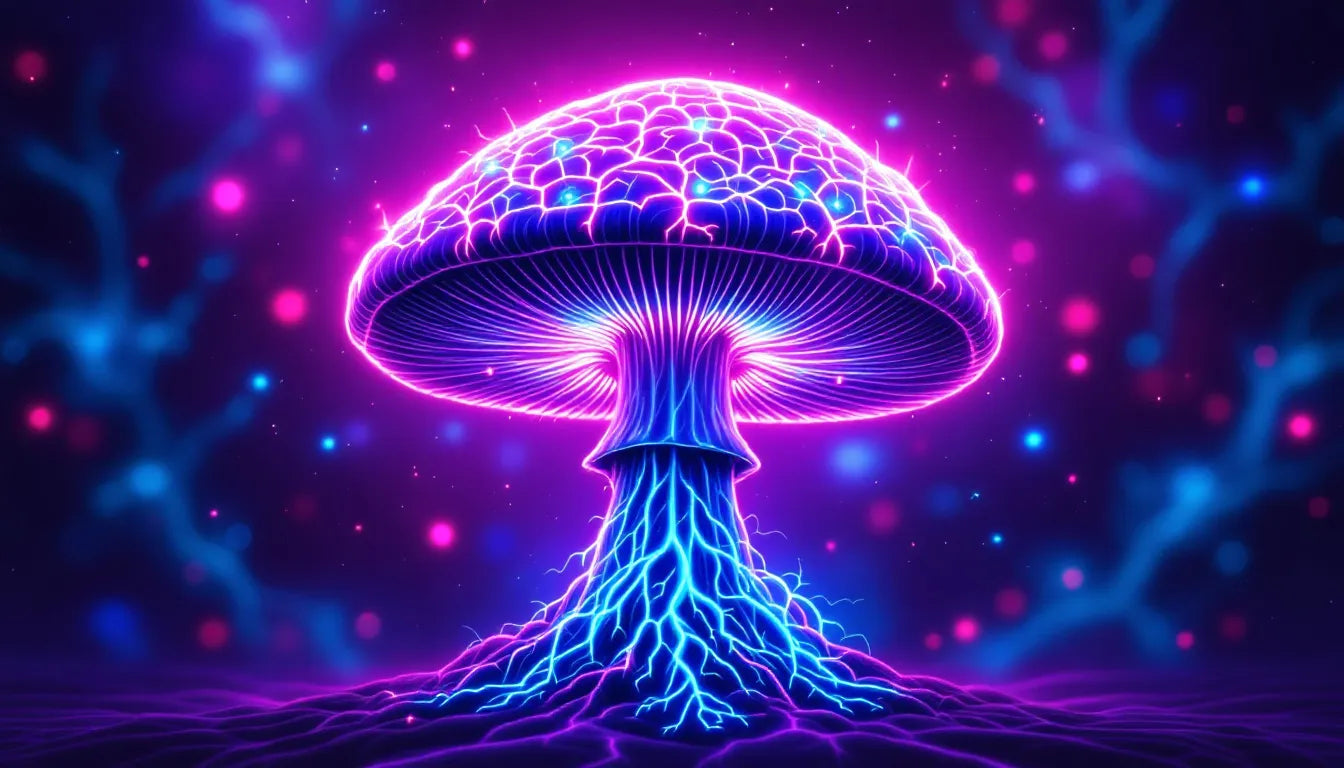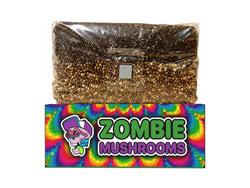- Psilocybin interacts with serotonin receptors, promoting neuroplasticity and potentially alleviating depression.
- Emerging research suggests psilocybin could treat depression without inducing psychedelic hallucinations.
- The absence of a psychedelic experience may reduce psychological risks but could also alter therapeutic outcomes.
- A non-psychedelic form of psilocybin therapy could increase accessibility, lower costs, and gain broader acceptance in clinical settings.
- Further research is required to confirm the long-term safety and efficacy of non-psychedelic psilocybin treatments.
Psilocybin and Traditional Psychedelic Therapy
For decades, psychedelic therapy has involved taking a controlled dose of psilocybin under professional supervision. Patients often undergo an immersive, altered state of consciousness, which is believed to promote deep emotional healing, insights, and a rewiring of negative thought patterns. Many individuals describe these sessions as profoundly transformative, sometimes reporting lasting relief from depressive symptoms after just one or two treatments.
Clinical studies have reinforced the efficacy of this approach. Research published in Neuropsychopharmacology found that psilocybin-assisted therapy can lead to significant and rapid improvements in depression, particularly in patients who have not responded to traditional antidepressants (Carhart-Harris & Goodwin, 2017). Unlike selective serotonin reuptake inhibitors (SSRIs), which can take weeks to work and may require continuous use, psilocybin therapy has been reported to provide relief within hours or days.

How Does Psilocybin Affect the Brain?
Psilocybin functions primarily by interacting with the brain’s serotonin system, specifically by binding to 5-HT2A receptors. This action is key to its mood-lifting effects. However, the compound’s therapeutic impact extends beyond just serotonin modulation.
Neuroplasticity and Brain Connectivity
- Psilocybin has been shown to promote neuroplasticity, enabling the brain to form new connections and repair dysfunctional circuits associated with depression (Ly et al., 2018).
- It encourages the growth of dendritic spines—tiny structures involved in neuron communication—which may help reset rigid, negative thought patterns.
- Brain imaging studies reveal that psilocybin enhances overall brain connectivity, allowing regions that typically don’t communicate to interact more freely (Doss et al., 2021).
The Default Mode Network (DMN) and Ego Dissolution
- The DMN, a network responsible for self-referential thinking and rumination, is overactive in depressed individuals.
- Psilocybin temporarily dampens DMN activity, which can disrupt repetitive negative thoughts, a hallmark of depression.
- The resulting “ego dissolution” is often associated with the feeling of connectedness and emotional release, a key element of psychedelic-assisted therapy.
Anti-Inflammatory Effects
- In addition to neural mechanisms, psilocybin may also exert antidepressant effects by reducing neuroinflammation, which has been increasingly associated with mood disorders.
New Research: Antidepressant Effects Without the Trip
Groundbreaking research is reshaping our understanding of how psilocybin works. Traditionally, it was believed that the hallucinatory experience was essential to its healing effects. However, emerging evidence suggests a different possibility: psilocybin could provide antidepressant benefits independently of the “trip.”
Key Findings
- Some studies suggest low, “sub-perceptual” doses of psilocybin still enhance neural plasticity without causing full hallucinations.
- Scientists are exploring modifications of psilocybin’s molecular structure to retain its antidepressant properties while reducing its hallucinogenic intensity.
- Animal research indicates that psilocybin’s activation of serotonin receptors may be enough to drive mood improvements.
These findings raise the possibility of psilocybin-based treatments that deliver mental health benefits without requiring a multi-hour psychedelic experience. This could drastically change how the treatment is administered.

Why This Matters for Mental Health Treatment
While psilocybin-assisted therapy has produced promising results, its widespread adoption faces practical challenges. Traditional sessions require a controlled setting, trained specialists, and extended hours of supervision. These factors increase costs and limit access for many patients.
If psilocybin could be administered without inducing hallucinations, the treatment process could be simplified
More accessible – Non-hallucinogenic psilocybin medications could be prescribed similarly to traditional antidepressants.
Fewer time constraints – Eliminating the psychedelic trip would reduce the need for hours-long guided therapy sessions.
Broader acceptance – Many people hesitate to take psychedelics due to concern about losing control; a non-psychedelic form could ease these concerns.
In essence, this advancement could bring the benefits of psilocybin within reach for a broader population, including medical professionals hesitant to adopt psychedelic-assisted therapy.
Advantages of Non-Psychedelic Psilocybin Treatment
A non-psychedelic formulation of psilocybin could lead to multiple benefits
- Shorter therapy sessions – Traditional trips can last 6-8 hours, requiring intensive patient monitoring. A non-hallucinogenic version could potentially work within a much shorter timeframe.
- Reduced psychological risks – While many find psychedelic therapy positive, some experience anxiety or distressing hallucinations. Avoiding these could improve treatment compliance.
- Easier regulatory approvals – Governments and healthcare systems may be more open to approving psilocybin treatments if they do not induce hallucinations.
- Potential for daily-use medication – Similar to SSRIs, selective-phase psilocybin formulations could provide ongoing mood stabilization.

Challenges and Limitations
Despite its promise, non-hallucinogenic psilocybin therapy comes with challenges
- Does removing hallucinations diminish effectiveness? Research suggests that the subjective mystical experience is tightly linked to long-term mental health benefits. If the trip is removed, will the antidepressant effects be as strong?
- Long-term safety unknown – Most studies on psilocybin have focused on full-dose psychedelic therapy. More research is needed to understand the safety of chronic or sub-dissociative doses.
- Regulatory hurdles – Even if non-hallucinogenic, psilocybin remains a Schedule I substance in many regions, posing legal challenges for market approval.

The Future of Psilocybin in Mental Health Care
If non-psychedelic psilocybin proves effective, we could see the development of psilocybin-based drugs that act similarly to conventional antidepressants but with faster results. This has major implications for
- Pharmaceutical innovation: Biotech companies are already working on altered psilocybin formulas that remove the hallucinogenic effects while retaining therapeutic properties.
- Medical legalization efforts: Non-psychedelic formulations may be more acceptable to regulators compared to full psychedelic therapy.
- Treatment-resistant depression: As more patients seek alternatives to existing antidepressants, psilocybin could address this critical mental health need.
Psychedelic Therapy vs. No n-Psychedelic Treatments: Which Is Better?
Each approach has potential benefits depending on a patient’s needs and preferences.
| Aspect | Psychedelic Therapy | Non-Psychedelic Psilocybin |
|---|---|---|
| Effectiveness | Profound personal insights, potential long-term relief | May work similarly, but effects over time are unclear |
| Session Duration | 6-8 hours with full supervision | Could be shorter, reducing time burden |
| Psychological Risk | Some risk of overwhelming experiences | Likely minimal risk of distressing hallucinations |
| Accessibility | Requires controlled environments | Could be prescribed like other medications |
| Social Acceptance | Controversial due to psychedelic history | More likely to gain mainstream medical adoption |
Final Thoughts
The idea that psilocybin could relieve depression without full-blown hallucinations is a game-changing breakthrough. It could reshape mental health treatment, making psilocybin therapies more accessible and widely accepted. While more research is necessary, these findings suggest that psychedelic medicine is entering a new era—one where its benefits may no longer be tied to a psychedelic journey.
Citations
- Carhart-Harris, R. L., & Goodwin, G. M. (2017). The therapeutic potential of psychedelic drugs: Past, present, and future. Neuropsychopharmacology, 42(11), 2105-2113.
- Ly, C., Greb, A. C., Cameron, L. P., Wong, S., Barragan, E. V., Wilson, P., ... & Olson, D. E. (2018). Psychedelics promote structural and functional neural plasticity. Cell Reports, 23(11), 3170-3182.
- Doss, M. K., Madden, M. B., Gaddis, A., Nebel, M. B., Griffiths, R. R., & Mathur, B. N. (2021). Model-free brain imaging methods capture placebo and LSD effects across multiple cognitive domains. Cell Reports, 37(7), 110080.




